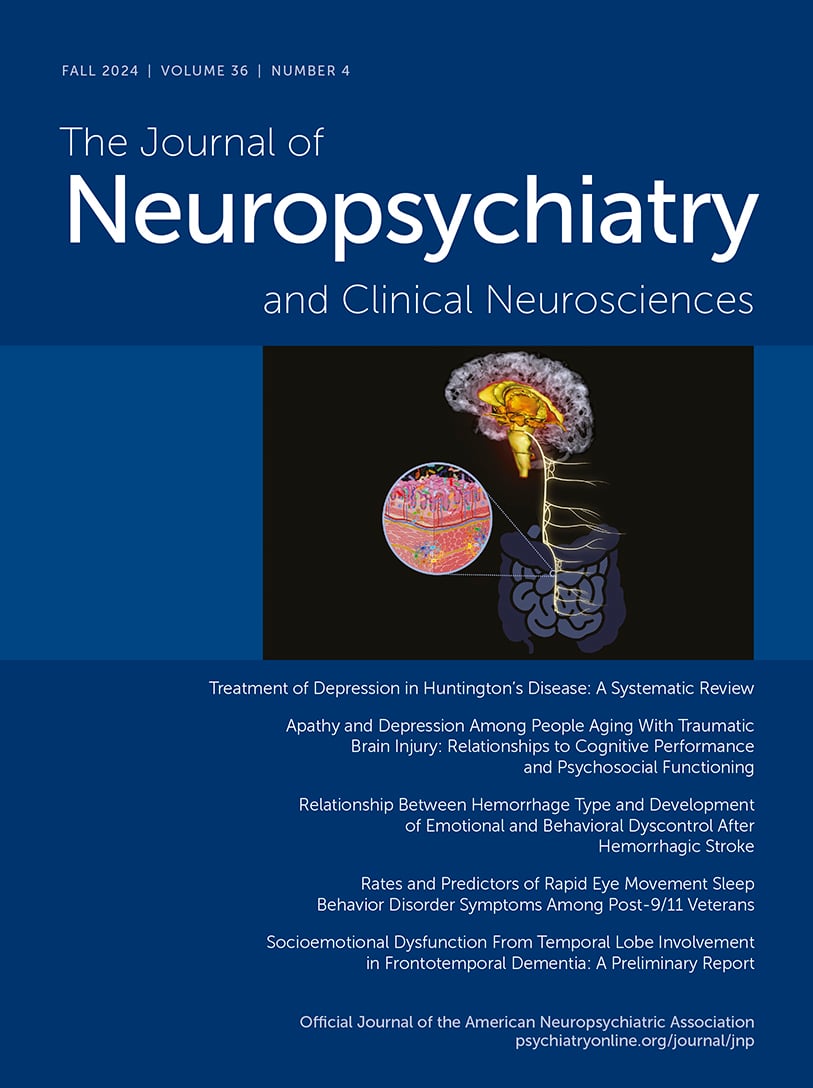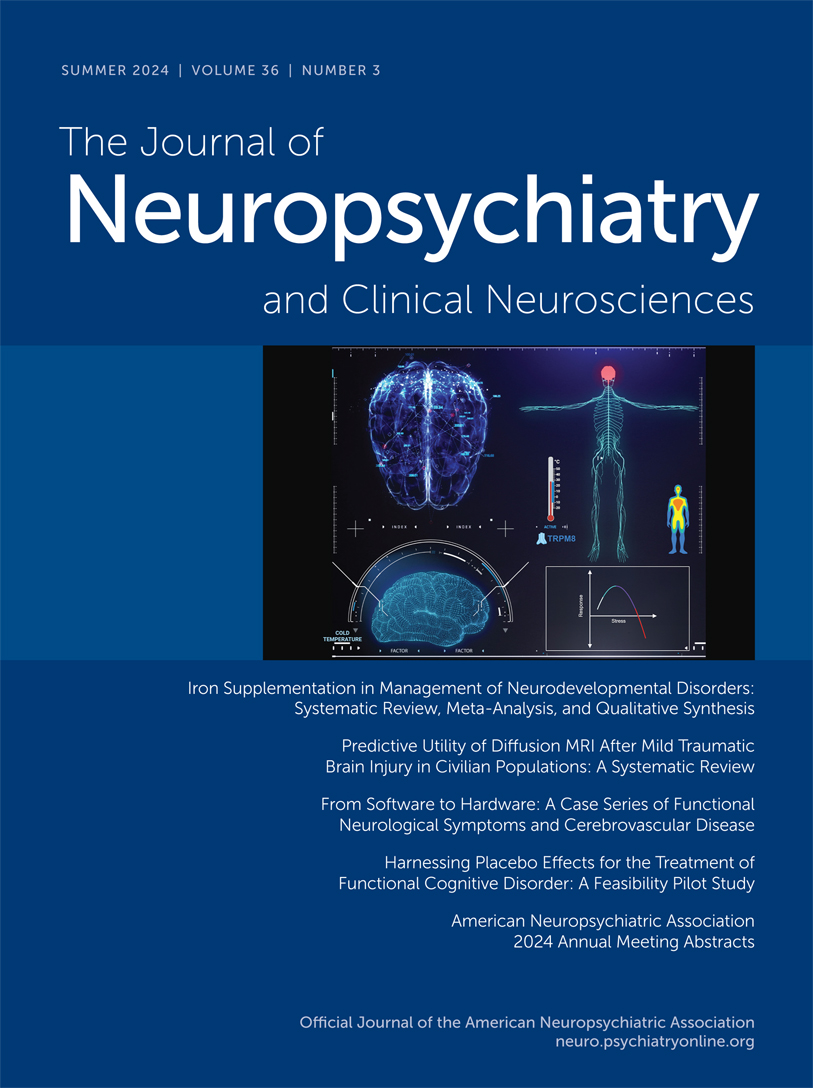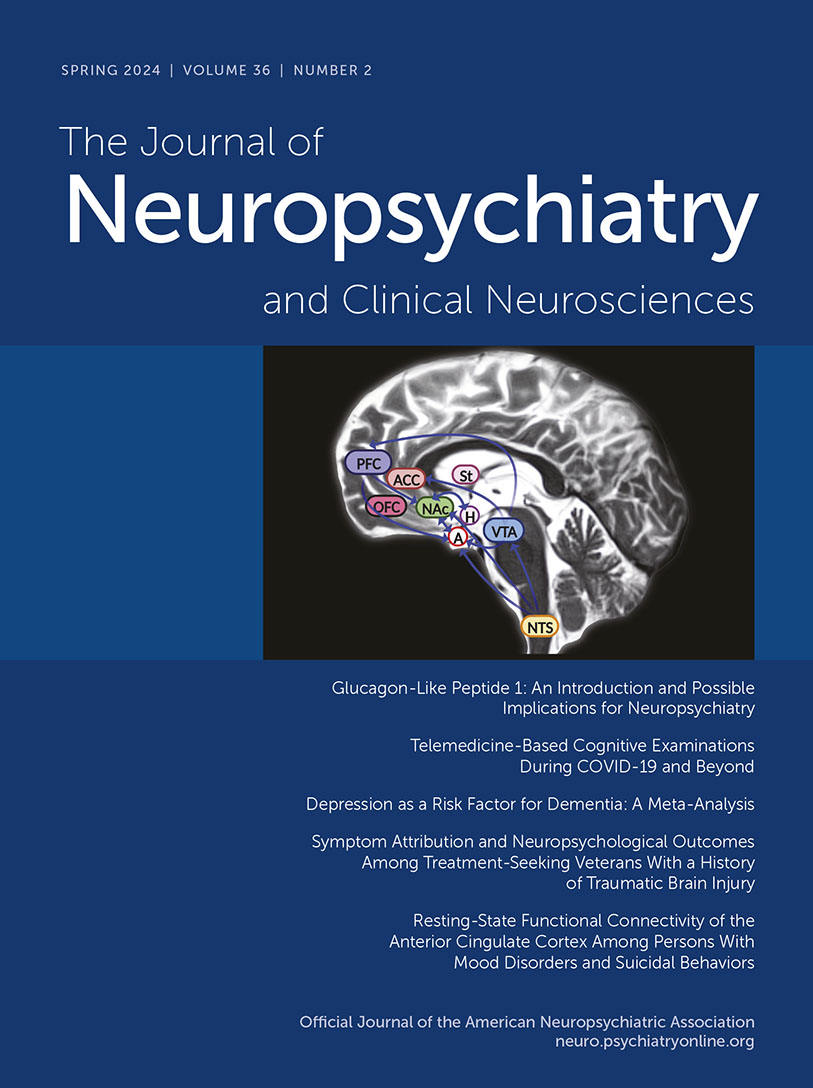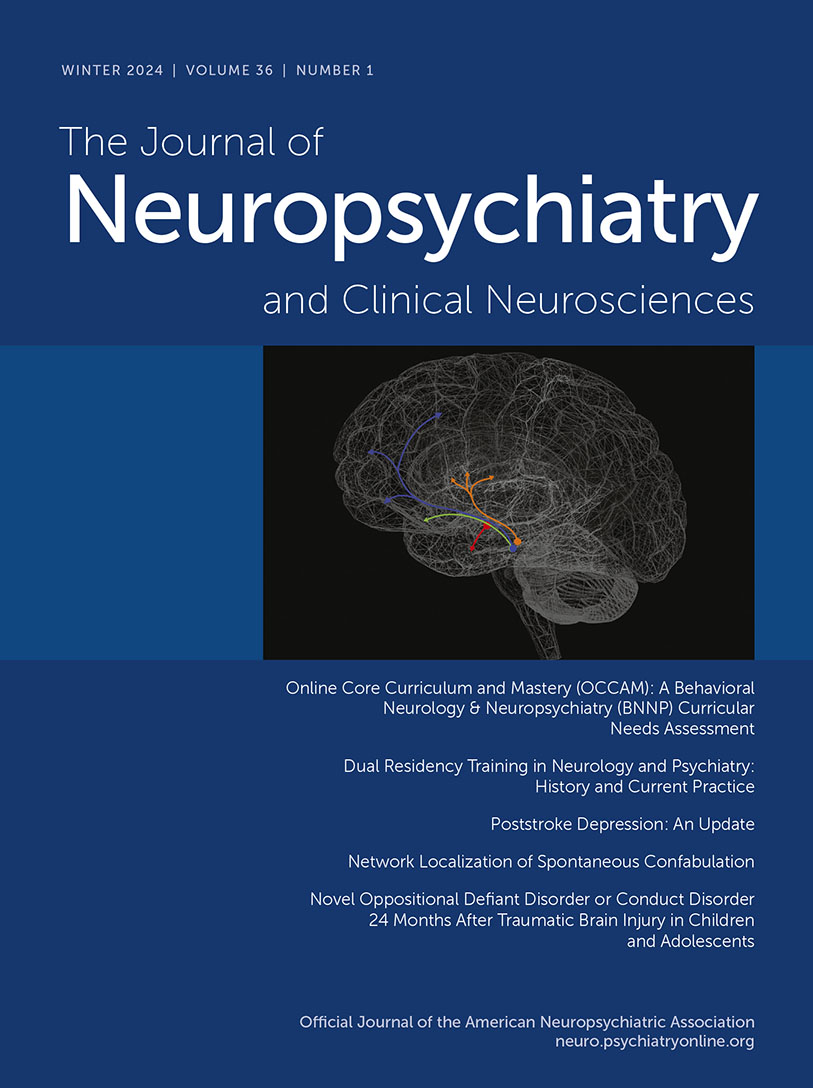The Journal of Neuropsychiatry and Clinical Neurosciences
- Volume 33
- Number 2
- May 2021
WINDOWS TO THE BRAIN
Articles
Publication date: 02 December 2020
Pages90–97Objectives: Pediatric autoimmune neuropsychiatric disorders associated with streptococcal infection (PANDAS) is characterized by the sudden onset of obsessive-compulsive disorder (OCD) and other neurobehavioral symptoms following group A streptococcal ...
https://doi.org/10.1176/appi.neuropsych.20030065Publication date: 14 January 2021
Pages98–108Objective: The investigators sought to evaluate the independent and interactive associations between mild traumatic brain injury (mTBI) characteristics and posttraumatic stress disorder (PTSD) symptoms with regard to postconcussive symptoms and cognition ...
https://doi.org/10.1176/appi.neuropsych.20050128Publication date: 18 November 2020
Pages109–115Objective: Somatization is thought to underlie functional somatic syndromes (FSSs) and may also contribute to prolonged symptoms after mild traumatic brain injury (mTBI). The investigators evaluated the prevalence of FSSs in patients seeking specialty ...
https://doi.org/10.1176/appi.neuropsych.20060159Publication date: 28 October 2020
Pages116–123Objective: Trauma-focused cognitive-behavioral therapy (CBT) is an important component of evidence-based treatment for posttraumatic stress disorder (PTSD), but the efficacy of treatment varies from individual to individual. It is hypothesized that some ...
https://doi.org/10.1176/appi.neuropsych.20030058Publication date: 02 December 2020
Pages124–131Objective: Recent research shows that patients with multiple system atrophy (MSA) have significant cognitive and neuropsychiatric comorbidities that can color the clinical presentation of the disease and affect their quality of life. The aims of this ...
https://doi.org/10.1176/appi.neuropsych.20030057Publication date: 25 February 2021
Pages132–143Objective: The investigators examined the association of patient-related and headache-related parameters and the effect of medication overuse headache (MOH); the occurrence of depression, anxiety, and stress; and the importance of different domains of ...
https://doi.org/10.1176/appi.neuropsych.20070189Publication date: 18 November 2020
Pages144–151Objective: Deep brain stimulation (DBS) is effective for the motor symptoms of Parkinson’s disease (PD). Although most patients benefit with minimal cognitive side effects, cognitive decline is a risk, and there is little available evidence to guide ...
https://doi.org/10.1176/appi.neuropsych.20040077Analysis and Commentary
Publication date: 14 January 2021
Pages152–156The behavioral variant of frontotemporal dementia (bvFTD) is the second most common cause of dementia for individuals <65 years old, but accurate diagnosis is often delayed for several years. While previous criteria have increased the ability of ...
https://doi.org/10.1176/appi.neuropsych.20090238Publication date: 04 February 2021
Pages157–160Alexithymia is pervasive among psychiatric patients, but its neurobiological mechanism is unclear. Patients with alexithymia cannot “read emotions,” a process involving interoception, or the perception of the body’s internal state, primarily in the ...
https://doi.org/10.1176/appi.neuropsych.20100252Clinical and Research Reports
Psychiatric, Motor, and Autonomic Effects of Bifrontal ECT in Depressed Parkinson’s Disease Patients
Publication date: 25 February 2021
Pages161–166Objective: Depressive symptoms are a source of significant morbidity in Parkinson’s disease (PD). Electroconvulsive therapy (ECT) is a promising treatment for depression in PD (dPD); however, data remain limited, including data on optimal electrode ...
https://doi.org/10.1176/appi.neuropsych.20050133Case Reports
Past Issues
View Issues Archive
Vol. 36 | No. 4

Vol. 36 | No. 3

Vol. 36 | No. 2
